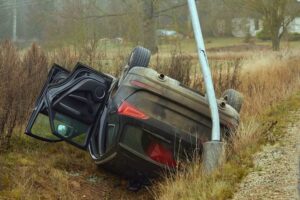
Table of Contents
General Information
Overview
A burn injury is when damage is afflicted upon the body’s tissues from heat, chemicals, electricity, sunlight, or radiation. Additionally, scalds from hot liquids and steam, building fires, as well as flammable liquids and gases are the most usual reasons of one suffers a burn injury. Burn injuries are not limited to exterior tissue. A burn injury can be sustained to the body’s interior tissue, such as an inhalation injury, prompted by breathing in smoke.
Degree of Burn Injury
There are three categories of burns, first-degree, second-degree, and third-degree. Mild burns are first-degree burns which only harm the external skin surface. Moderate burns are second-degree burns where the external skin surface and the layer below are injured. Severe burns are classified as third-degree burns where the lowest layer of skin and tissues are impaired or even destroyed.
Burn Symptoms
The severity of burns vary, leading to a broad spectrum of symptoms. Burn injuries can inflict inflammation, blistering cysts or welts, disfigurement, electrocution, and, in grave situations, death. Burn injuries can become infectious as the skin’s defensive layer has been comprised. Healing for a burn injury is contingent upon the source of the burn, the degree of severity, and the extent of the body damaged. Antibiotic topical creams can stop or heal infections. For more critical burns, aside from cleansing the injury, the skin may need to be restored with the patient receiving sufficient liquids and proper nourishment.
Assessment
A burn injury is when damage is afflicted upon the body’s tissues from heat, chemicals, electricity, sunlight, radiation, hot liquids, steam, building fires, flammable liquids, or gases. As skin is the largest organ of the human body, it is one of the body’s greatest defenses versus damage and contamination. Dehydration, difficulty breathing, potentially deadly infections, lifelong scarring, and debility are all possible ailments after suffering a burn injury. A burn assessment examines the severity of the burn, or degree, as well as how widespread the burn injury is relative to the victim’s entire body. A medical professional grades a burn injury by calculating a percentage of the total body surface area (TBSA) damaged. For more information, continue reading about degree of burns and burn assessments.
Safety Measures and Possible Hazards
Fires and burn injuries are the fourth greatest source of unintentional fatalities for both children and adults in the United States. Small children, elder adults, and people with medical ailments have a greater threat of experiencing a burn injury and casualty. The bulk of burn mishaps can be avoided with plain safety measures, such as follows.
- Keep the water heater no hotter than 120° Fahrenheit.
- Never place your child in the tub or let yourself hop in the shower without first checking the water temperature.
- When cooking on a stovetop, use the back burners and turn the handles of pots and pans in to avoid accidentally knocking them over or off the stove.
- Install smoke alarms and confirm the batteries work every six months.
- Dispose of frayed or damaged electrical cords and check them regularly.
- Always keep covers on all electrical outlets, especially those near the floor within a child’s reach or pet’s curiosity.
- Do not smoke in the house and never smoke in bed. The main reason for house fire fatalities are fires produced by cigarettes, pipes, and cigars.
- Always keep objects a minimum of three feet away from the back and sides of space heaters with a minimum distance of five feet from the front. Never allow blankets, clothes, and other flammable materials to be near a space heater and never leave a space heater on while you are not in the room with it.
For more information, continue reading about safety measures and possible hazards.
Healing and Rehabilitation
Depending on the severity of the burn injury, there are several ways to heal. For small, first-degree burn blisters, one can use aloe, a plant similar to cacti, as well as aspiration, or draining of the blister.
Similar to cacti, aloe lives best in hot, dry environments. While it is grown in subtropical areas throughout the globe, its mainly found along the southern border regions of Texas, New Mexico, Arizona, and California in the United States. Aloe has been used as a treatment for various skin ailments and was believed to recover baldness and stimulate the body’s natural healing curing.
Aloe can be used as a topical agent or consumed orally. Topical use of aloe can assist with the healing of burns and radiation-induced skin toxicity among other medical conditions. Medical investigation indicates topical use of aloe has the potential to increase the recovery time of burn injuries. Likewise, data suggests aloe treatment might be able to decrease the pain caused by a burn injury.
If your burn injury leaves you with an agonizing blister, drain the fluid without breaking the skin to prevent infection. The process is relatively simple:
- Properly cleanse your hands and blister with soap and warm water.
- Dab and wipe the blister with iodine.
- Use rubbing alcohol to sanitize a sharp needle.
- Use the needle to pop the blister. Target numerous areas around the blister’s perimeter to avoid tearing off the entirety of the protective skin. Allow the fluid drain without removing the overlying skin.
- Apply a topical cream, like petroleum jelly, to the blister and protect it with a non-adhesive gauze dressing. If a rash develops, cease use of the topical cream immediately.
- Inspect the burn injury each day for infection. Continue applying fresh gauze bandages to prevent infection.
For critical burn injuries, such as third-degree radiation burns, more intensive rehabilitation may be required.
Hyperbaric Oxygen Therapy
Hyperbaric oxygen therapy is where a patient sits in a pressurized chamber and breathes pure oxygen. Most commonly used for decompression sickness, notably with scuba diving, hyperbaric oxygen therapy can additionally assist with the healing of dangerous infections and radiation burn injuries. The hyperbaric chamber has a pressure of two to three times that of regular air pressure. The increased air pressure makes it possible for the lungs to acquire significantly more oxygen. The increased oxygen in the bloodstream combats toxic bacteria at a higher rate while simultaneously emitting growth factors and stem cells at a higher rate. The increased emission of growth factors and stem cells foster increased healing. For more information, continue reading about burn injury healing and hyperbaric oxygen therapy.
Burn Types
Chemical Burn
Chemical burns can occur from contact with several elements. Harsh acids, drain cleaners, paint thinner, and to name a few. Typically, one understands the reasoning for the burn and its basis. However, weaker chemicals may initially leave unnoticeable burns. Sunburn, for example, takes an extended period of exposure time before discomfort and discolored skin become apparent. If you don’t know if a chemical is harmful, call Poison Help United States line at 800-222-1222. Bring the chemical container (or the name of the chemical at the very least) with you to the emergency medical treatment center.
Electrical Burn
Electrical burns can occur from tasers, lightning, light switches, wall outlets, and other household locations and objects. Minor, first-degree electrical burn injuries can be treated the same as other minor burn injuries. Never attempt to assist an injured person while they are still touching the source of electricity or an electrical current. It is important to consult with a doctor after an electrical burn as serious damage can occur to internal tissues, specifically in the arms or legs. The internal injury has the potential to be worse than what is visible on the skin.
Hot Water Burn
Hot water burns ensue when water is heated in a fresh cup, such as heating up water for hot chocolate. Likewise, hot water burns occur in the bathroom if the water heater’s temperature is too high. It is imperative to check the temperature of bath water before allowing your child to get in and before you get in the shower. Critical skin burns or scalding injuries can occur to the hands, feet, and face from grabbing an overheated cup of water or stepping into a shower or bath of excessively hot water.
Scald Burn
Scalds are caused by wet heat while burns are caused by dry heat. Most scalds can be remedied on your own, however some will require medical attention as they can be life endangering. Any scald or burn injury exceeding three inches or affecting more than one limb or location of the body needs instant medical care. The two high-risk demographics are children younger than five and adults older than sixty five. Improved understanding is a fundamental factor to scald avoidance. For more information, continue reading about the numerous types of burns.
Study
Burn Injury Data From 2016
Number of Burn Injuries Obtaining Medical Care: 486,000
Fire/Smoke Inhalation Fatalities: 3,275
Hospitalizations Associated to Burn Injury: 40,000, including 30,000 at hospital burn centers
Survival Rate: 96.8%
Gender: 68% Male, 32% Female
Ethnicity: 59% Caucasian, 20% African-American, 14% Hispanic, 7% Other
Admittance Basis: 43% Fire/Flame, 34% Scald, 9% Contact, 4% Electrical, 3% Chemical, 7% Other
Location of Incident: 73% Home, 8% Work-related, 5% Street/Highway, 5% Leisure/Sport, 9% Other
For an in-depth look, continue analyzing burn injury data.
Similar Injuries
Electrical Injuries
Fire Injuries
Plant Accidents
Refinery Accidents
Oil Field Injuries
Oil Rig Explosions
Free Burn Injury Legal Consultation
The attorney you choose does make a difference; don’t get hurt twice. Our expert legal team has proven to be dedicated, compassionate, and most importantly, effective fighters for our clients. We have handled thousands of personal injury cases and recovered millions of dollars for our clients. We are with you every step of the way. We handle all personal injury cases on a contingency fee basis, and we never charge a fee unless we win.
Hollingsworth Law Firm is located at 1415 North Loop West, Suite 200, Houston, Texas 77008. You can call us at 713.637.4560 or fax at 713.474.9017. Our office is open Monday through Friday from seven in the morning until seven at night, closed on Saturday and Sunday. You can always send us a message on our website.
About Hollingsworth Law Firm
Our aggressive personal injury trial attorneys at the Hollingsworth Law Firm are committed to fighting for the compensation you deserve. If you are the victim of an automobile accident, airplane accident, workplace injury or other catastrophic injury, you need legal advice from a personal injury attorney with proven results you can trust. Our dedicated legal team is proud to represent clients across the state of Texas. WE WILL START FIGHTING FOR YOUR RIGHTS TODAY!
Helpful Articles & Resources
Topics
- Boating Accidents
- Brain Injury
- Burn Injury Attorney
- Car Accidents
- Catastrophic Injury Attorney
- Child Injuries and Fatalities
- Commercial Vehicle Accident Attorney
- ExxonMobil Baytown Refinery Fire
- Industrial Accident Attorney
- Injury
- Personal Injury
- Plant and Refinery Accident Attorney
- Product Liability
- Rear-End Collisions
- Semi Truck Accident Attorney
- slip and fall accident
- Uncategorized
- Wrongful Death Attorney
Fight For Your Rights
Schedule Your Free Consultation Now!
Please fill out the form below and our staff will contact you to schedule your free consultation.


